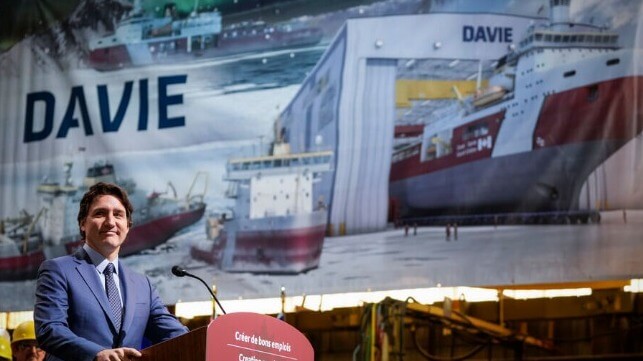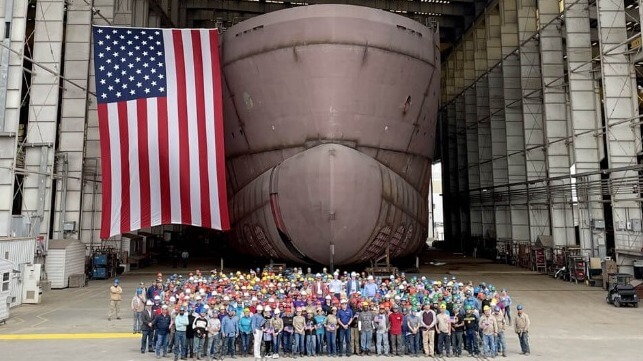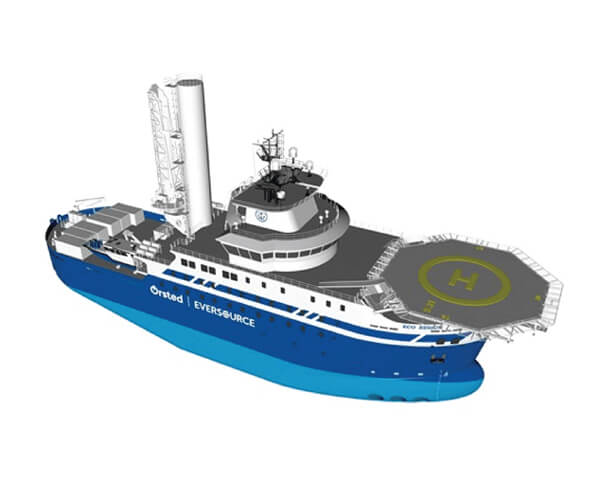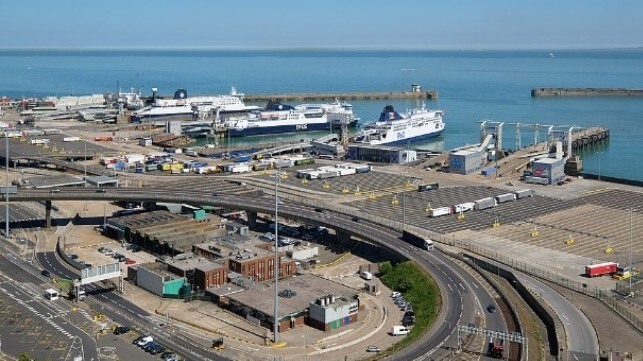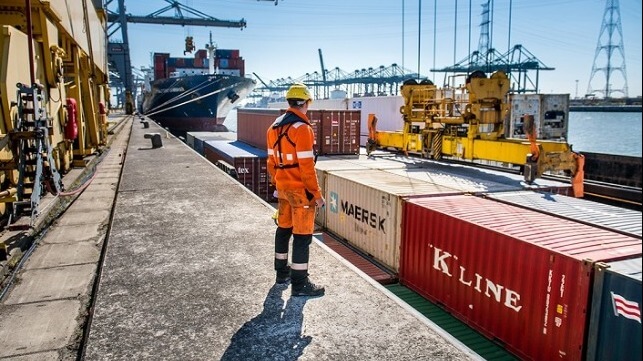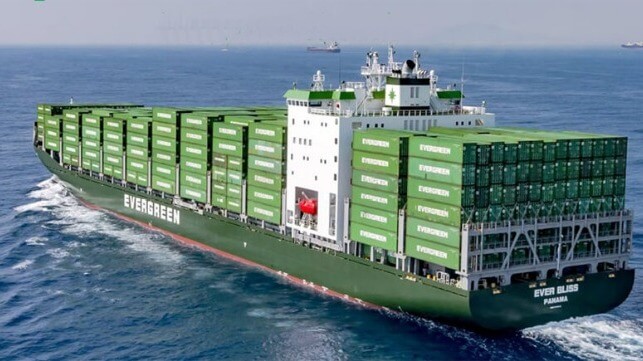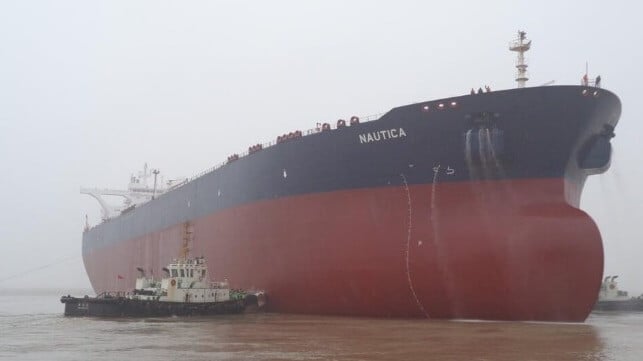A New Era For Nuclear Power In America?
- Two new nuclear reactors are expected to come online at Georgia Power's Vogtle plant.
- The new reactors will give a boost to U.S. nuclear power growth, which has stalled for the past 20 years.
- The Vogtle project has experienced years of delays and cost overruns.
Nuclear power has been a source of electricity in the United States for more than 60 years. The first nuclear power plant in the U.S. was the Experimental Breeder Reactor I in Idaho, which started up in 1951.
The Atomic Energy Act of 1954 established a regulatory framework for the development of nuclear power, and in 1957 the Shippingport Atomic Power Station in Pennsylvania became the first commercial nuclear power plant in the world.
The early years of nuclear power in the United States were marked by significant growth. During the 1960s, nuclear power plants were built across the country. In 1973, the United States had 29 operating reactors, producing over 16,000 megawatts (MW) of electricity. By the end of the decade, that number had grown to 60 operating reactors, producing over 50,000 MW.
However, the industry would suffer its first major setback in 1979, when the Three Mile Island nuclear power plant in Pennsylvania experienced a partial meltdown. This accident resulted in a small release of radioactive material into the environment. While there were no deaths or injuries from the incident, it led to increased scrutiny and regulation, and it increased opposition of nuclear power plants.
Since Three Mile Island, there have been major accidents at Chernobyl in 1986 and Fukushima, Japan in 2011 that had a significant impact on global nuclear power growth.
Global Nuclear Power Generation 1965 to 2021. ROBERT RAPIER
The U.S. has consistently been the world’s leading producer of nuclear energy, with a 29% global share in 2021. Nuclear energy is responsible for 8% of all U.S. energy consumption. However, after rapid growth from 1965 t0 2000, nuclear power growth in the U.S. has been stalled for the past 20 years.
U.S. Nuclear Power Production 1965-2021. ROBERT RAPIER
Prior to this year, only one new nuclear reactor come had online since 1996. The Watts Bar Unit 1 came online in 1996 in Tennessee, and the Watts Bar Unit 2 came online in 2016.
That should change this year, as Georgia Power, a subsidiary of Atlanta-based Southern Co. prepares to start up two new reactors. The reactors at Plant Vogtle, southeast of Augusta, Georgia, were approved by the Georgia Public Service Commission in 2009. The reactors are two Westinghouse AP1000 nuclear units with a capacity of about 1,117 MW each.
The first reactor was supposed to start generating power in 2016, but the project has suffered years of delays and billions in cost overruns. But, last month Vogtle Unit 3 began to split atoms, as startup testing got underway. Commercial operation is expected to commence in May or June. Unit 4 could start up as early as November of this year. So, nuclear power should finally see a boost in the U.S. this year.
According to the U.S. Nuclear Regulatory Commission (NRC), a number of new reactors were approved in the U.S. over the past decade or so. But most of those were cancelled by the applicants in the wake of the Fukushima disaster. Beyond Vogtle, there are no more nuclear reactors under construction in the U.S.
Given the significant delays and cost overruns seen in the Vogtle project, it may be a long time before we see another conventional nuclear reactor built in the U.S.
The next generation will likely see the rise of Small Modular Reactors (SMRs). SMRs are designed to be more flexible than traditional nuclear reactors. They can be used to generate electricity in remote locations or to replace retiring coal-fired power plants. SMRs are also designed to be safer and more efficient than traditional nuclear reactors.
In January 2023, GE Hitachi Nuclear Energy (GEH), Ontario Power Generation (OPG), SNC-Lavalin and Aecon announced a contract for the deployment of a BWRX-300 SMR at OPG’s Darlington New Nuclear Project site. This is the first commercial contract for a grid-scale SMR in North America, and it represents a significant step towards the adoption of SMRs.
By Robert Rapier for Oilprice.com
Vogtle Nuclear Unit Begins Producing Power
Last Saturday, April 1, (yes we’re aware of the date) Southern Company’s largest operating subsidiary, Georgia Power, announced that the first of its two nuclear plants under construction, Unit 3 of the new Alvin W. Vogtle nuclear power station, had been synchronized to the grid and was producing electricity for consumers. All technicalities aside this means the plant is now complete, loaded with fuel, irradiated, and producing electricity for commercial customers. Its companion, unit 4, presently undergoing hot functional testing, is expected to enter commercial operation either later this year or early next year. Together these two Westinghouse-designed AP 1000 reactors (four loop PWRs) will contribute about 2400 MWs to Southern Company's existing nuclear generating fleet which includes Plant Vogtle Units 1&2, Plant Hatch (also in Georgia) as well as Alabama Power’s Farley unit.
As an aside, we should point out that Southern Company has a tradition of naming these facilities after its CEO’s and Board Chairmen. Georgia Power’s website notes that, Mr. Vogtle, apart from his years of executive service to the company, was a POW in the second world war. His numerous, ultimately successful escape attempts were incorporated into the movie, The Great Escape. One would’ve thought that being portrayed by Steve McQueen would’ve been enough. Apparently not.
Much has already been written (including by us) about how costly the plant is and how lengthy the construction process. Stated simply the build time was twice what they expected and the final costs look to be triple the initial estimates. All we know publicly is that the co-owner, Municipal Electric Authority of Georgia (MEAG )complained a year ago about the plant costing in excess of $30 billion. To that figure we have to add the $3.7 billion paid by Westinghouse as a settlement to the co-owners as part of Westinghouse’s bankruptcy. Let’s call it a $36 billion plant costing $15,000 per kw installed. (A new, large natural gas fired power plant by comparison would cost about $2500 per kw.) No matter what you compare it to this is an extremely expensive power plant. One major mitigating financial factor is that Georgia Power only owns about 50% of the unit. The remainder is split between three municipal entities: Oglethorpe Power (30%), Municipal Electric Authority of Georgia (17.7%), and Dalton Utilities (2.2%). A similar sharing arrangement exists for the other nuclear stations as well. In all fairness, we should point out that both of Southern Company's previous nuclear projects, which were completed in the mid to late 1970s, came in at a cost of well under $1,000 per kw. In fact, Georgia Power’s website boasts that the two GE Mark 1 BWRs at Plant Hatch cost $938 million for 1800 MWs. Our point here is that going into the Plant Vogtle construction process, Southern Company had strong municipal partners, a relatively favorable construction experience, as well as considerable operating expertise in nuclear power.
But before we move on we should recall that this nuclear construction episode was responsible for: 1) the bankruptcy of Westinghouse and Toshiba (for signing fixed price contracts), 2) the cancellation of its twin- —the VC Summer nuclear plant in South Carolina owned by SCANA— after spending $8 billion, 3) several senior SCANA executives were sent to prison (presumably for lying to investors about escalating plant costs), 4) SCANA was soon sold to Dominion Resources shortly thereafter, 5) the governor of SC threatened to privatize the Santee Cooper Electric Co-op (Summer’s co-owner) and fired its chief executive, 6) while exposing Georgia regulators as being highly prejudicial in favor corporate versus the public’s interest (the regulatory disallowances Southern Company would face for a financial boondoggle of this magnitude would be financially crippling in many other state jurisdictions). Co-op leaders in both South Carolina and Georgia felt confident in 2008 that they would get a piece of a new, larger nuclear unit that would cost $10 billion or less.
One major impact of a nuclear construction program gone awry like this is that it makes the rest of the utility industry skittish about following suit with additional new, gigawatt scale nuclear projects. Georgia Power notes that Plant Vogtle is the first US nuclear power station to be completed in thirty years. The real question for us is who’ll agree to finance the second? We don’t think it’s a coincidence that small modular reactors (SMRs) are receiving considerable attention since they literally portray themselves as the opposite of Plant Vogtle’s experience with on time and rapid construction. Part of the appeal of SMRs right now are in reaction to construction and financing difficulties at huge nuclear megaprojects in the US, France, and the UK. But this is not necessarily a good thing. We may want large scale nuclear power plants in the mix if we want low-carbon, gigawatt scale base load options. All we can say is that the nuclear power industry continues to alter its appeal, now presenting itself as the best utility scale, low carbon option.
By Leonard Hyman and William Tilles for Oilprice.com
